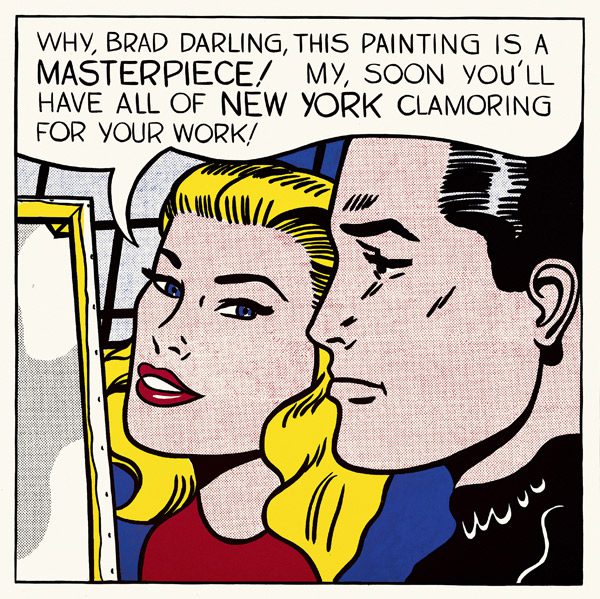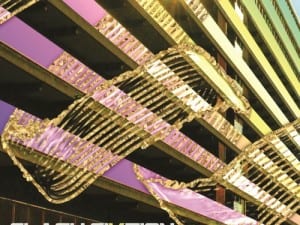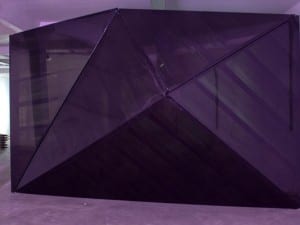Lichtenstein: A Retrospective currently on display at Tate Modern showcases the first comprehensive account of his art since his death in 1997. Bringing together 125 of Lichtenstein’s paintings and sculptures, the exhibition is co-organised by the Art Institute of Chicago and Tate Modern.
The Oxford Dictionary defines the widely used term of “pop art” as; “art based on modern popular culture and the mass media, especially as a critical or ironic comment on traditional fine art values”. The definition is then widened; “The term is applied specifically to the works, largely from the middle of 1950s and 1960s, of a group of artists including Andy Warhol, Roy Lichtenstein, Jasper Johns, and Peter Blake, who used images from comic books, advertisements, consumer products, television, and cinema”. This is exactly what the Lichtenstein retrospective showcases but there is also more to it. From his Brushstrokes paintings, parodies of abstract expressionism, to his works in Early Pop featuring Look Mickey (1961). These works push-started his career in pop art while his black and white paintings subverting the scale of objects connoted the influence of 1960s American consumerism through Alka Seltzer (1966) , Portable Radio (1962) and Golf Ball (1962) and the early beginnings of corporate culture through his work titled, The Desk Calendar (1962). The exhibition deepens in subject matter as the time spent in its spaces accumulates.
Based on comic books such as All-American Men of War and Girls’ Romances, the fourth room in the exhibition is dedicated to war and romance paintings probing the exaggerated stories and clichéd gender roles that were broadcast in the American mass media. Considering the period in which Lichtenstein made these paintings, the pop art he was producing catered to the public’s needs during the course of the Cold War. Some may have viewed this series of paintings as examples of American patriotism while others may have asked, “Is this really art?” In 1964, Life magazine queried, “Is he the worst artist in the US?” Reviewing Lichtenstein’s paintings today we can only see that he had such a good sense of the zeitgeist. In his words, “Art relates to perception, not nature.” This idea of perception is what really makes his art true to itself. Another of the sections that deals with issues of vision and perception is Mirrors and Entablatures in which Lichtenstein’s study of pictorial conventions for representing mirrors and reflections in commercial catalogues can be observed.
The exhibition further introduces Lichtenstein’s work through his art about art, in which he engages with art historical styles and also objectifies the paintings of Picasso (whom Lichtenstein was very inspired by during his earlier years), Matisse and Mondrian. Through these works he transformed “high-art painting” into another high-art medium that presents itself as “low-art” but the intricacy of the paintings tell us otherwise. Portrait Triptych Study (1974) is proof of how limpid the different art forms were in his mind despite his reputation as one of the greatest pop artists of his time.
The retrospective also includes Lichtenstein’s Late Nudes and Chinese Landscapes in which we can see how his Benday dot technique evolved from three-colours to a full spectrum of colour. In all its tones, shades, techniques, styles and ideas, Lichtenstein is once again appreciated by visitors of all backgrounds and ages through this vast and thought-evoking retrospective exhibition.
Lichtenstein: A Retrospective, until 27 May, Tate Modern, Bankside, London, SE1 9TG.
Hande Eagle
Credits
1. Roy Lichtenstein, Masterpiece 1962, Private Collection © Estate of Roy Lichtenstein/DACS 2012.
2. Roy Lichtenstein, Oh, Jeff…I Love You, Too…But… 1964, Collection Simonyi © Estate of Roy Lichtenstein/DACS 2012.





